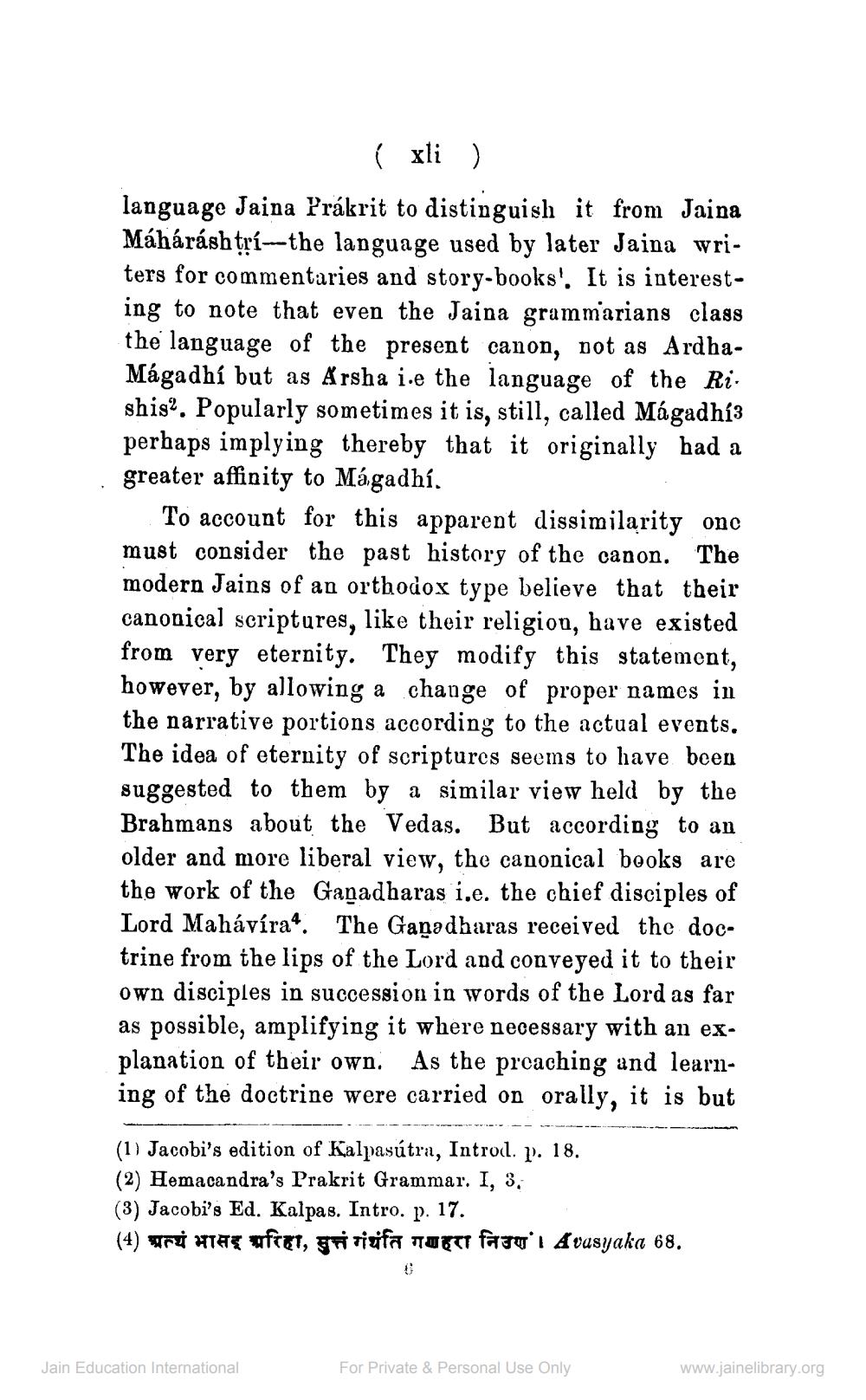________________
( xli) language Jaina Prakrit to distinguish it from Jaina Máhárásh trí-the language used by later Jaina vriters for commentaries and story-books!. It is interesting to note that even the Jaina grammarians class the language of the present canon, not as ArdhaMágadhí but as Arsha i.e the language of the Ri. shis?. Popularly sometimes it is, still, called Mágadhí3 perhaps implying thereby that it originally had a greater affinity to Mágadhí.
To account for this apparent dissimilarity onc must consider the past history of the canon. The modern Jains of an orthodox type believe that their canonical scriptures, like their religion, have existed from very eternity. They modify this statement, however, by allowing a change of proper names in the narrative portions according to the actual events. The idea of eternity of scriptures seems to have been suggested to them by a similar view held by the Brahmans about the Vedas. But according to an older and more liberal view, the canonical books are the work of the Ganadharas i.e. the chief disciples of Lord Mahávíra4. The Gaşadharas received the doctrine from the lips of the Lord and conveyed it to their own disciples in succession in words of the Lord as far as possible, amplifying it where necessary with an explanation of their own. As the preaching and learning of the doctrine were carried on orally, it is but
(1) Jacobi's edition of Kalpasútra, Introdl. 1». 18. (2) Hemacandra's Prakrit Grammar. I, 3, (3) Jacobi’s Ed. Kalpas. Intro. p. 17. (4) ari HTÆT OFTTT, Fri tivfa TUCTT facu' i A vasyaka 68.
Jain Education International
For Private & Personal Use Only
www.jainelibrary.org




